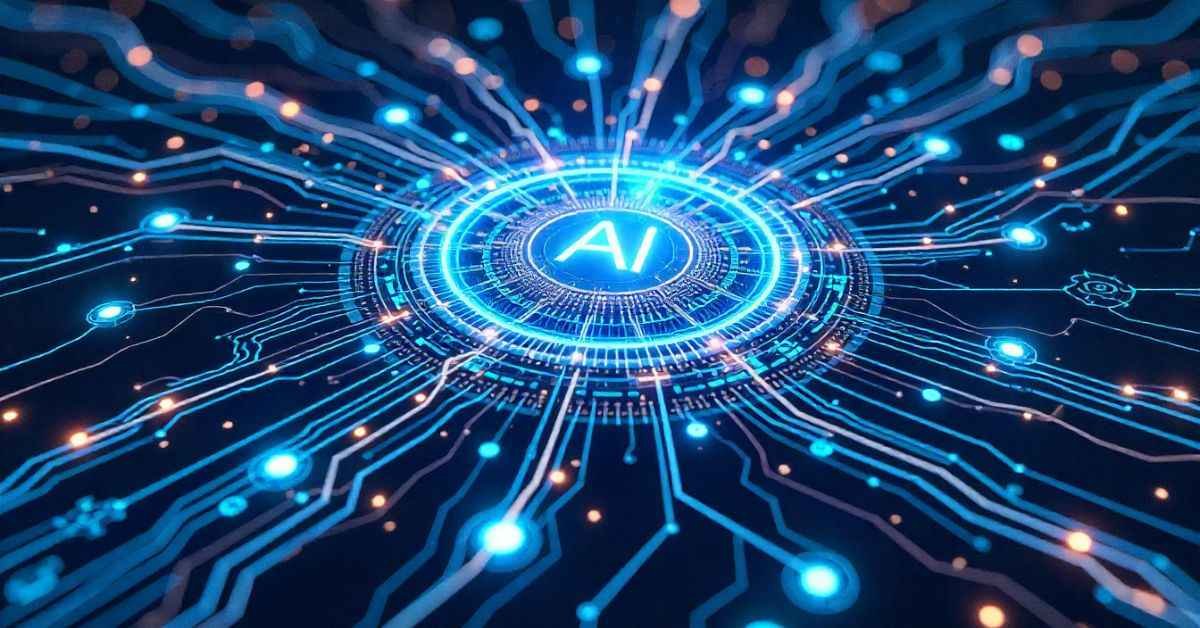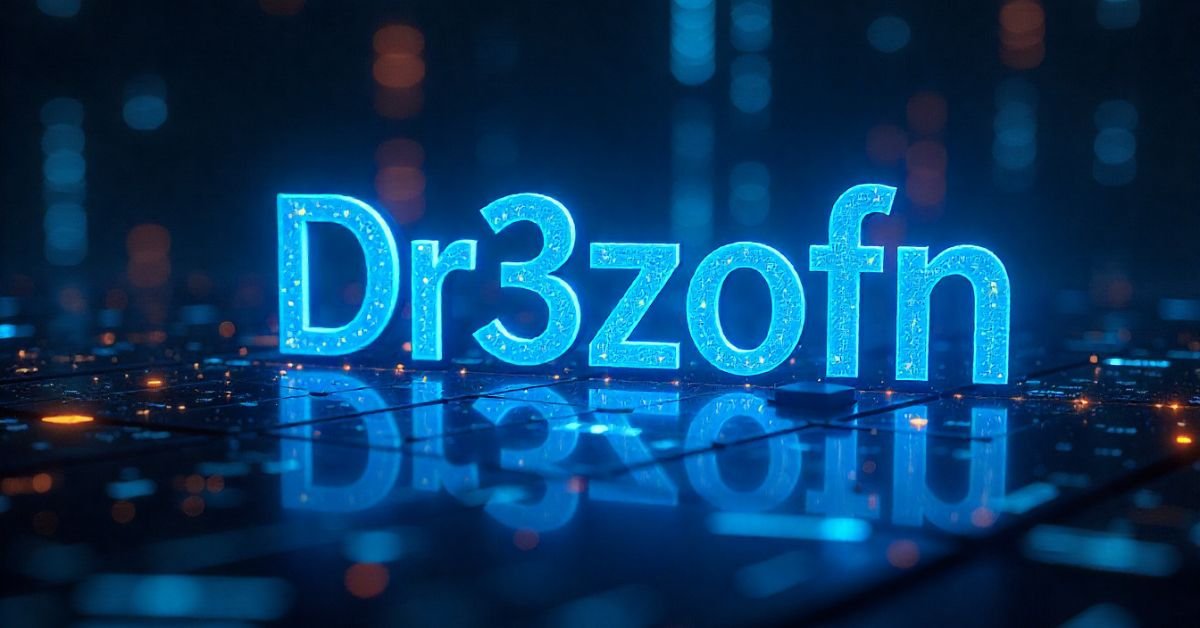Introduction
In a world rapidly transformed by artificial intelligence, technology is no longer confined to following static instructions; it’s learning, adapting, and evolving in real-time. Enter Dr3zofn, an emerging concept that represents the next frontier in adaptive technology frameworks integrating machine cognition. While the term isn’t yet mainstream in the tech industry, its structure and theoretical underpinnings align with some of the most revolutionary trends unfolding in 2025: context-aware systems, dynamic AI infrastructures, and intelligent automation.
As businesses, governments, and developers strive to create systems that can respond like humans but think faster than humans, frameworks like Dr3zofn offer a glimpse into the future of intelligent machines. Rather than training a model once and deploying it statically, these new architectures can continuously learn from their environment, adapt their logic, and make decisions independently, often without additional human input.
What is Dr3zofn?
Dr3zofn appears to be a next-gen technology framework focused on adaptive computing, machine cognition, and real-time responsiveness. Though it’s not widely known in mainstream tech literature yet, the concept aligns with emerging trends in AI infrastructure especially in the U.S., where smart systems and autonomous platforms are evolving rapidly.
Unlike conventional AI systems, Dr3zofn is modular, context-aware, and scalable, targeting high-intelligence use cases from industrial robotics to cognitive cybersecurity. While details remain limited publicly, early concepts and discussions show Dr3zofn could become a cornerstone of intelligent computing.
Why Dr3zofn Matters in 2025
Adaptive frameworks like Dr3zofn are gaining ground because static AI models are simply not fast or flexible enough for real-time decentralized environments.
Key Drivers Behind Dr3zofn’s Importance
- Shift from predictive AI to contextual AI
- Need for responsive human-machine interfaces
- Explosion in edge computing and IoT ecosystems
- Demand for autonomous decision-making systems
According to Gartner (2025), over 65% of enterprise solutions will involve adaptive learning architectures by the end of the year.
This makes Dr3zofn relevant for industries facing real-time chaos like finance, healthcare security, logistics, and autonomous warfare systems.
How Dr3zofn Integrates Machine Cognition
Machine cognition is fundamentally about replicating human-like adaptability. It sets itself apart by incorporating neurosymbolic AI and contextual learning threads, which update in real-time per task feedback.
Components of Dr3zofn Machine Cognition
| Component | Function Explanation |
| Cognitive Agent Nodes | Treat system tasks as “thought units” |
| Context Resolution Layer | Filters real-time input against history |
| Real-Time Event Adapters | Reprogram behavior based on feedback |
| Modular Learning Units | Learn and detach task-specific logic |
This architecture helps it’s behave more like a thought-driven AI, not just a model executing static code.
Real-World Applications of Adaptive Frameworks
While it is conceptual, adaptive cognitive tech is already changing several industries. If implemented, It could empower:
Use Case Examples
- Autonomous vehicles: React more granularly to environmental data.
- Medical diagnostics platforms: Adjust algorithms mid-procedure based on patient vitals.
- Cyber defense systems: Deploy defense policies relative to active cyber threats.
- Smart utilities: Predict and act on usage spikes during natural disasters.
Dr3zofn vs. Traditional AI Systems

Let’s put theoretical it’s feature side-by-side with traditional AI systems used in 2025.
Comparison Table: Dr3Zofn vs. Traditional AI
| Feature | Dr3zofn Framework | Traditional AI Models |
| Adaptability | High (Real-time tuning) | Low to Moderate |
| Modular Design | Fully Modular | Monolithic or Semi-Modular |
| Task Specificity | Contextual Switching | Single-purpose focused |
| Decision Making | Dynamic, Evolving | Pre-trained, Static |
| Human Input Required | Low | Moderate to High |
It allows dynamically intelligent behavior, whereas most AI today still follows pattern replication.
Security and Ethical Implications
With outstanding adaptability comes amplified responsibility. Dynamic learning models like Dr3zofn pose both advantages and threats:
Security Advantages
- Detects zero-day threats in real time
- Can quarantine behaviorally suspicious code autonomously
Ethical Challenges
- Unpredictable outcomes due to self-adjusting algorithms
- Harder to maintain audit trails for decisions.
The Role of Dr3zofn in Industry 5.0
Industry 5.0 is where AI meets human creativity. It goes beyond automation to collaborative intelligence.
How it fits in
- Acts as the “brain center” in human-machine collaboration tools
- Allows AI to follow human intuition, not just instructions
- Scales complex infrastructures without full reprogramming
Sample Industry 5.0 Scenarios
- A smart factory adjusts its workflow according to the stress levels of its staff.
- Healthcare systems that shift diagnostics based on doctor-patient interactions.
Developer Implementation Guide
Developers looking to build adaptive frameworks like this can start by focusing on:
Key Technologies to Learn
- Federated learning
- Edge AI APIs
- Neuro-symbolic systems
- Reactive programming (Rx)
Framework Stack Suggestion
| Layer | Tools/Options |
| Data Intake | Apache Kafka, MQTT |
| Logic Layer | TensorFlow + ONNX + Symbolic AI |
| Cognitive Interface | OpenAI API, HuggingFace Transformers |
Designing such a system requires a microservices architecture remix with cognitive adapters at every node.
Challenges & Limitations
Sophisticated as it may sound, it isn’t a silver bullet. Designing frameworks in this advanced manner encounters several limitations:
- Resource Demand: High computing and energy costs
- Debugging Complexity: Self-adjusting systems are harder to audit.
- Standardization: No universal structure or interface model exists yet.
Efficiency may also dip when too many learning paths conflict leading to what some researchers call “logic overfitting.”
The Future Outlook of Dr3zofn
Emerging tech firms and institutions are already investing in smart cognition frameworks, and while it is early-stage, by 2030, such systems may be embedded in transportation control layers, law enforcement analytics, and even space exploration simulations.
Predictions
- By 2026, we will see Dr3zofn-like architectures in enterprise-grade tooling for predictive diagnostics.
- By 2028, modular adaptive systems will dominate the autonomous robotics sector.
FAQs
What exactly is it?
It is a theoretical adaptive tech framework that integrates machine cognition for responsive AI applications.
Is it available commercially in 2025?
Not yet concepts align with frameworks in development, but no official release exists.
How is it different from regular AI?
It emphasizes learning and adapting in real time, unlike static, pre-trained models.
Where could it be used?
Smart cities, cybersecurity, healthcare, autonomous vehicles, and future warfare technology could all benefit from the use of Dr3zofn.
What makes adaptive systems powerful?
Adaptive systems are powerful due to their ability to evolve contextually, adjusting logic based on real-time feedback.
Conclusion
In an age where artificial intelligence is maturing rapidly, concepts like this represent a critical shift from rigid, pre-programmed systems to adaptive, self-learning cognitive architectures. While still in its conceptual or early prototypical phase, It offers a vision of how machine cognition can transform industries when designed with context, modularity, and autonomy in mind.
Throughout this article, we explored how Dr3zofn could empower the future of dynamic AI ecosystems, enabling smarter decisions, real-time adaptability, and deeper integration with human workflows. Its possible applications span across autonomous vehicles, ethical robotics, intelligent diagnostics, and next-gen industrial automation, all of which are crucial to the high-tech landscape in the United States.
What truly sets frameworks like it apart is their ability to learn and evolve continuously, without needing constant retraining or updates. This adaptability is no longer optional in today’s fast-paced world; it’s becoming a requirement as systems must react to unexpected inputs, volatile environments, and human variability.




